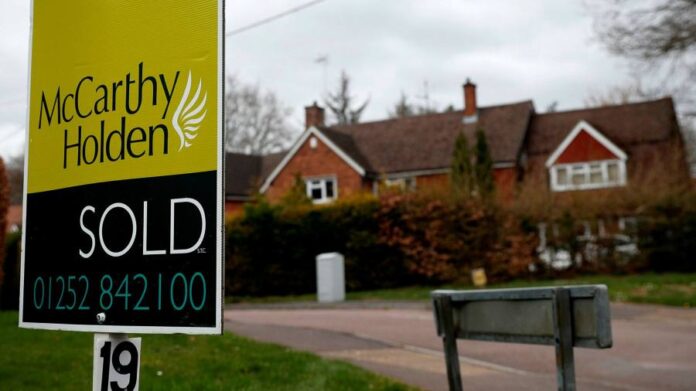UK house prices updates
Sign up to myFT Daily Digest to be the first to know about UK house prices news.
Demand for expensive homes in the UK is shifting away from London, with the bulk of £1m-plus sales coming outside of the capital in the first five months of this year.
The latest Land Registry transaction data analysed by Search Acumen provides further evidence that the shape of the country’s housing market appears to be changing on the back of the coronavirus pandemic.
The property data company found that 52 per cent of the 4,881 homes which sold for £1m or more in England and Wales were outside Greater London, the first time since at least 1995 that the capital has not accounted for the bulk of sales in this category.
London has lost share to commuter towns and other cities as the move to homeworking during the pandemic loosened ties to the office. Estate agents, including Savills, have dubbed it a “race for space” as buyers with savings targeted bigger properties with more outdoor space, particularly in suburban areas.
“People are trading out of London and buying million pound homes in commuter towns,” said Richard Donnell, research director at property portal Zoopla. “Where the London housing market has been red hot is outer London, but you don’t get a lot of million pound homes in outer London,” he added.
The government’s stamp duty holiday, which was introduced last July to stimulate the market, has also played a part, offering anyone completing a purchase before June 30 on properties worth £500,000 and above a saving of £15,000.
The pandemic has accelerated a longer-running trend, with London’s stranglehold on the country’s priciest properties gradually slipping over recent years.
One reason has been that prices in other parts of the country have increased faster than those in the capital since the middle of the last decade, with transaction volumes also falling in London.
According to Halifax, the building society, average UK house prices increased 7.4 per cent in the 12 months to July. But the headline figure obscures large regional differences: average prices in Wales increased 13.8 per cent and in Yorkshire they rose 11 per cent, while London prices were up an average of 2.5 per cent in the same period.
In the so-called “prime” London market, prices have steadily declined since 2014 owing in part to the introduction of taxes on overseas buyers and second-home owners as well as Brexit.
As prices have converged and buyers have looked beyond the capital, the proportion of £1m-plus homes sold in other parts of England and Wales rose from 42 per cent in 2018 to 47 per cent last year.
In the first few months of 2020, London’s share of £1m-plus sales briefly surged, hitting 61 per cent of all transactions in that category in England and Wales before the first coronavirus lockdown in late March shut the property market down for just under two months.
Estate agents attribute the brief boost to the capital’s market to the Conservatives’ election victory in December 2019, which gave prime minister Boris Johnson the mandate to drive through a hard Brexit.
“London and the south-east did appear to be reinvigorated. Whether that was to do with people thinking ‘Brexit is over’ or ‘we’re free of [former Labour leader Jeremy] Corbyn’, it brought back a bit of positive sentiment to that market,” said Neal Hudson, research director of market research company Residential Analysts.
But that bounce proved shortlived, with sales skewing to areas outside of London as soon as the market reopened in May.
“London’s monopoly on higher value homes has come to an end and legal firms across the country will find themselves dealing with increasingly high-stakes transactions,” said Andy Sommerville, director at Search Acumen.
Credit: Source link









